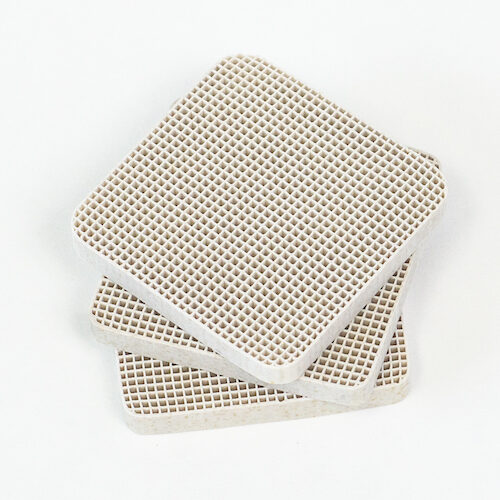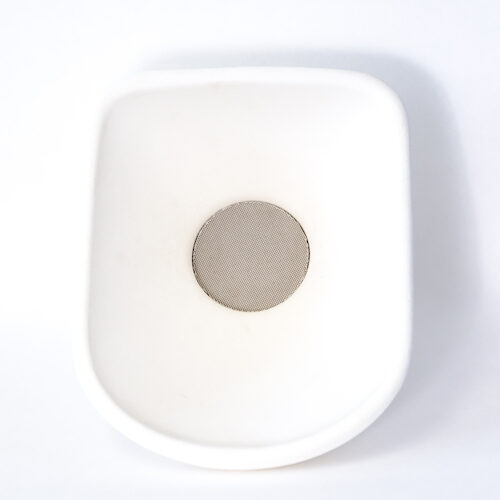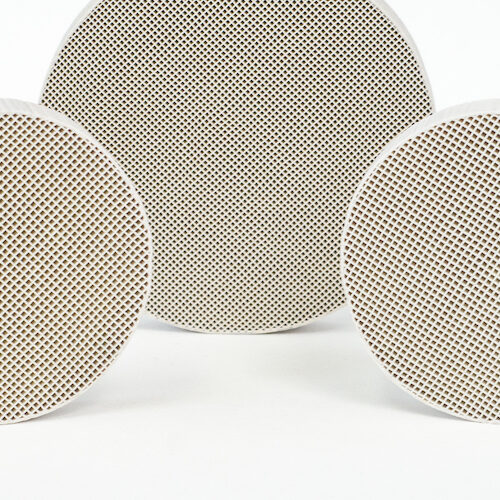Ceramic
Honeycomb Filters
for Metal Filtration
Ceramic honeycomb filters remove non-metal impurities and gas, purifying and making the metal liquid steady. As a result, they reduce the casting costs and improve the quality of the product, making it the superior product to other options like 3D-printed and foam filters.
Top Reasons More Customers
are Switching to Holy Filters
When it comes to metal filtration, many people are unaware of a ceramic honeycomb filter's superiority. The product features include a large surface area, increased flow-rate, high mechanical strength, product consistency, and excellent thermal shock resistance.

Extremely easy
to use & maintain
- no cleaning required
- drop in and use
- no shedding or breakage
- eliminates splash
- custom tapering & wrapping

Substantial
Cost Savings
- 45% less scrap
- 30% more throughput
- 20% re-work reduction
- long-term partnership reliability
- increased yield

Superior
Product Features
- uniform laminar flow
- increased flow rate
- custom sizes & shapes available
- better filtration with superior flow
- high mechanical strength & consistency
- excellent thermal shock resistance
Additional Advantages of
Ceramic Honeycomb & Holy Filters
CERAMIC HONEYCOMB FILTERS
Ceramic honeycomb filters are the best option if the company needs superior cleaning or casting ability. There are many multiple shapes available, but most are square, rectangle or round.
| Typical Sizes | Minimum | Maximum |
| Length or Diameter (in) | .5" | 6" |
| Width (in) | .5" | 6" |
| Height (in) | .25" | 1" |
| CPSI | 16 | 500 |
*other sizes and shapes available upon request
Laminar Flow vs. Turbulent Flow
Using a ceramic honeycomb filter improves the quality of molten metal flow. The ceramic honeycomb filters create laminar flow which is superior to turbulent flow. When the molten liquid metal passes through the ceramic honeycomb channel, the debris, the slag and other inclusions are removed. A stable and fast laminar molten metal flow prevents air from getting into the molten metal flow, molten metal getting oxidized and splashing out.
Comparable foam filters have a wide variation in the amount of time it takes liquid to flow through them. Although the result of the designed random pattern creates the “tortuous path”, it increases the time variability and the “splash” effect. Even from filter to filter in the same exact size and PPI the flow can vary considerably (+/- seconds), even in the same filter from pour to pour. This can create problems when trying to control the solidification of the crystals during casting.
The honeycomb filters have very consistent flow as well as generating laminar flow. Having more laminar flow prevents splashing and void inclusions in the castings.
DESIGN SUPPORT
Depending on your company’s needs, our products can be designed specifically for your flow control, strength, and performance. Applied Ceramics began manufacturing ceramic honeycomb in 1980. Since then, ACI continues to offer our world-class engineering support to create more value for its customers and partners and selling into this market since 1984.
FAQs
Want to save costs while
improving quality?
Our ceramic honeycomb filters for molten metal do exactly that - let's have a conversation around any technical questions you might have and the positive impacts this sort of change will have on your business.
About Holy Filters
Holy Filters (Applied Ceramics) brings its customer focus aligned with its materials, tooling and manufacturing expertise to provide breakthrough solutions that change the world. Since 1967, we have provided value through performance, cost savings, new product development or customized solutions.
ACI maintains and cultivates its ceramic process and materials technology. We take on multiple research and development projects each year to further our capability and expertise. We also operate two full-service labs to support these efforts as well. Going back to 1980, we have maintained a heavy focus on product development and research with a high percentage of sales each year going to new products that were sold the previous year. To further this, the company employs a strong contingent of Materials Science engineers partnered with multiple Ph.D. and Master's degree ceramic engineers and scientists.
